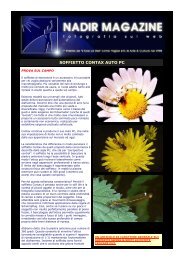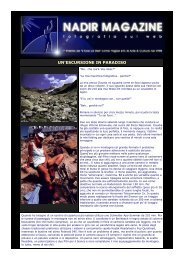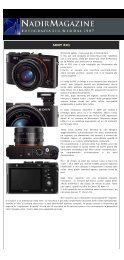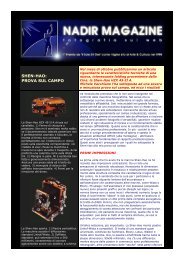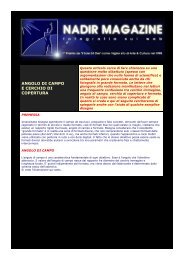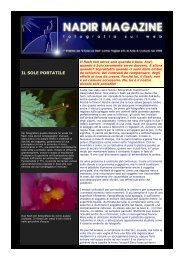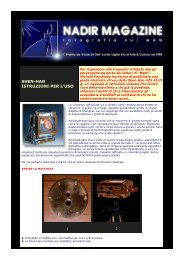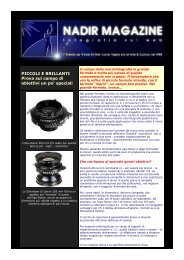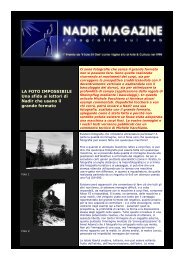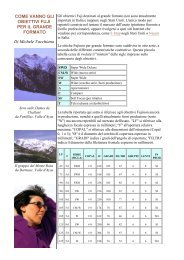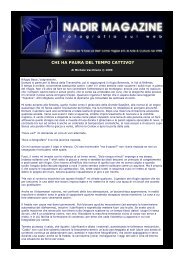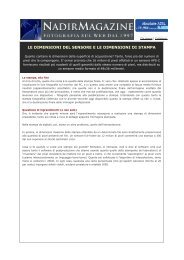The Grand Paradise National Park - Michele Vacchiano
The Grand Paradise National Park - Michele Vacchiano
The Grand Paradise National Park - Michele Vacchiano
Create successful ePaper yourself
Turn your PDF publications into a flip-book with our unique Google optimized e-Paper software.
skiers hungry for real contact with nature, instead of another chance to practice their athletic performance, can find it here.<br />
Of course, we could debate at length about the timeliness of creating uncontaminated oases in a world that is galloping<br />
toward ecological catastrophy. Some could argue that the existence of parks and natural reserves actually legitimizes the<br />
destruction of the environment outside them. But until respect for nature becomes a part of our way of viewing the world<br />
(until now dominated by a logic of depredation), parks alone are left to care for the remaining wilderness. Thus, scholars<br />
and lovers of nature can observe and appreciate what we are relentlessly destroying on the rest of this planet.<br />
Even if a national park can protect the environment and preserve it intact for future generations, it can do nothing to<br />
prevent the gradual yet unrelenting destruction of the local civilization. This degeneration has tangled roots. It's a sort of<br />
cultural colonization which is difficult to identify and impossible to stop. As each old man dies, the languages, beliefs,<br />
and traditions of the mountains are disappearing forever. <strong>The</strong> clumsy, superficial attempts made by folk groups cannot<br />
bring them back to life. A culture is not a collection of dances, songs, and proverbs, but a way of understanding the world,<br />
an extremely complex semiological code that cannot be reproduced by anyone who isn't a living part of it.<br />
Perhaps this extinction, too, is an ineluctable phenomenon, part of world evolution. Like many greater and better known<br />
past civilizations, the mountain communities and their culture are going to die out. <strong>The</strong>ir deaths will come without too<br />
much ado, in silence, with discretion, as is the custom here.<br />
A priority goal of current park policy is the education of people toward a new way of relating to the environment.<br />
Teaching programs in schools and summer activities for children and adults (such as workshops about nature<br />
photography) are helping both foreign and native tourists alike to understand the complicated interactions underlying the<br />
territory even before their first approach to the park. A photographer looking for impressive images can find them easily<br />
here. <strong>The</strong> beauty and magnificence of these valleys and mountains, their evocation of a still uncontamined nature, plus the<br />
emotions stirred by their wildlife will remain in his soul (and on his film) as an indelible memory.<br />
<strong>Grand</strong> <strong>Paradise</strong> <strong>National</strong> <strong>Park</strong>. Valnontey (Aosta Valley).<br />
Rocciaviva and Glacier du Money from east ridge of Herbetet<br />
<strong>The</strong> mountains of <strong>Grand</strong> <strong>Paradise</strong> group were sculpted by glaciers during the Quaternary glaciations, which created the<br />
valleys we see today. Above the larch forests, you can find high alpine meadows bright with flowers in summer (when<br />
you can spot very rare species of flowers) and dominated by the highest peaks of the massif. Here you can walk above the<br />
clouds among myriad glacial lakes, cross a mountain pass while surrounded by steinbocks, and--if you sit down to admire<br />
the landscape--marmots may come to inspect you. In front of you, the glaring splendor of glaciers or the austere majesty<br />
of towering peaks spread out in an almost overwhelming panorama.<br />
Obviously, you'll need serious photographic equipment. Here are my suggestions:<br />
Wide-angle lenses for the human environment. I suggest a simple 28 mm (45-55 in medium format) for the little<br />
villages with their dry-walled houses or the "baite" (alpine huts) for summer pasture. In large format, I use a 90 mm<br />
Super-Angulon.<br />
A normal lens for scenery. (Do not use wide-angle lenses, or the mountains will appear exaggeratedly small and<br />
faraway.)<br />
A telephoto lens for animals. In the park, you can get close to steinbocks (Capra ibex ibex) quite easily. <strong>The</strong>y are<br />
accustomed to human presence, so--as long as you move slowly and quietly--you don’t need extreme focal lengths. From<br />
200 to 300 mm in small format, from 300 to 500 in medium format will allow you to capture excellent photos.



